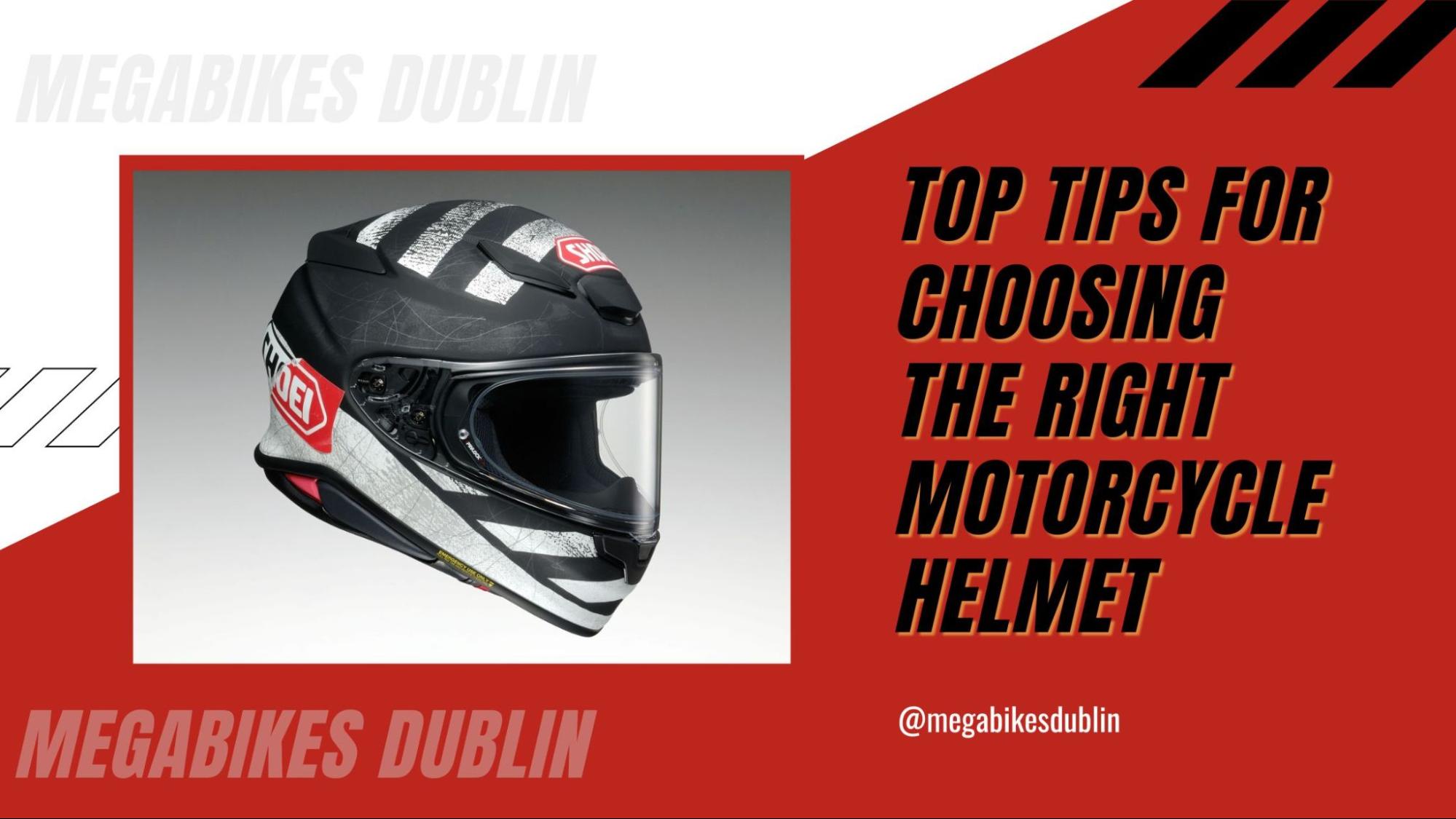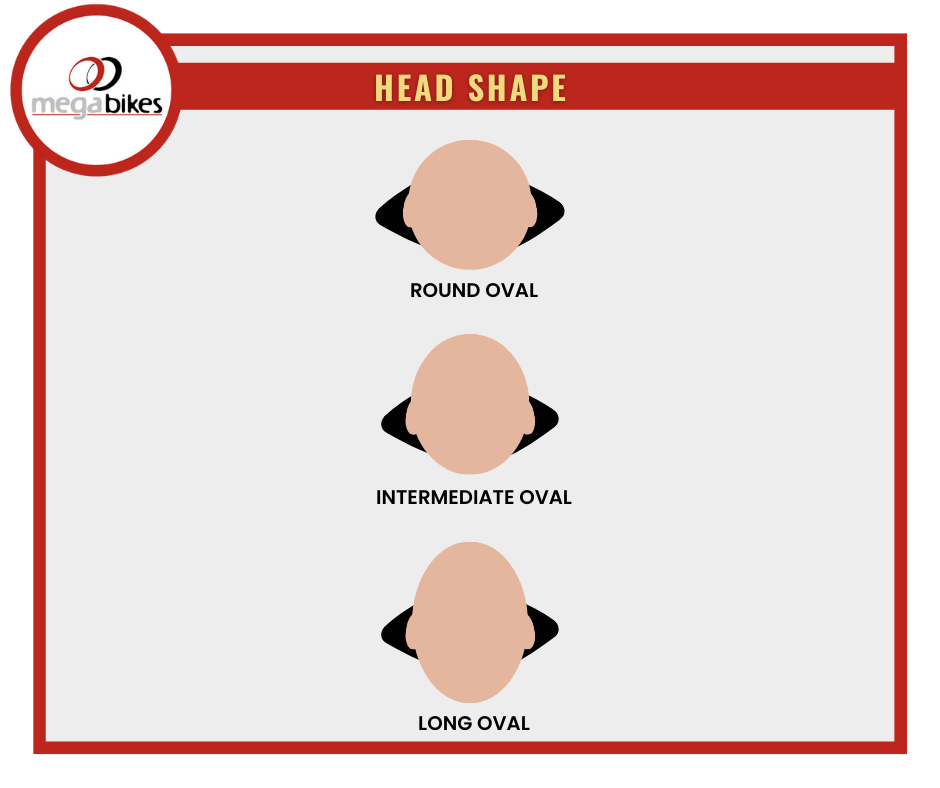Introduction
Your helmet is an essential piece of gear, and there are a lot of choices out there. The right helmet can help to keep you safe on the road, while the wrong one will be more trouble than it's worth. To make sure that your next motorcycle helmet really works for you, follow these five tips:
- Choose your style of helmet
- Measure your head
- Find your head shape
- Try some helmets on
- Test the helmet
Choose your helmet style.
There are different styles of helmets to suit different needs. Are you riding mostly to commute in the city? Do you ride adventure or dirt? Are you using your motorcycle for long distance journeys?
- Full face helmets: Full face helmets cover the entire head and provide more protection than open-faced models. These are quieter and warmer. However, many full face models come with vents that allow air to flow in or out of the top of your helmet so you will not overheat during long rides or when you're stopped at a light or stop sign.
- Open Face Helmets (3/4): Open-faced helmets cover only a portion of your head, leaving much more exposed than full face models do. This style offers less protection for your face but allows for better visibility and hearing while riding (though it is noisier at high speeds).
- Modular Helmets: Modular helmets are a great mix between the Full and Open face. These helmets have a hinge that allows the front section of the helmet (visor to chin) to open up and swing to the back of the helmet. Thus, transforming a full face into an open face helmet. This allows for much easier transitions from riding to not riding without removing the helmet. Such as entering a petrol station while allowing your full face to be seen. This is the perfect helmet style for commuting.
Measure your head.
As you read through the rest of this section, keep in mind that this is a very important step. When it comes to helmets, you should never skimp on size. It's better to get a helmet that fits snugly than one that's too loose and potentially dangerous.
You can measure your head at home without too much fuss; if you don't have a soft measuring tape you can use a piece of string with a ruler.
- Use the soft measuring tape to measure the circumference of your head.
- The tape should sit just above your eyebrows and around the back of your head at the widest part.
- Check your measurement against a helmets size chart to work out what you need. Remember sizing can be a little different between brands so please don’t assume if you're a Medium in Bell that you’re also a Medium in Arai. Always double check the numbers.
Find your head shape.
There are three head shapes that most people fit: long oval, intermediate oval, and round oval. You’ll need a friend to help you with this.
- Flatten your hair down as much as possible to show the shape of your head more clearly.
- Have a friend photograph your head from above.
- Compare the shape of your head. Is it round oval, intermediate oval or long oval.

Try them on
There is no better way to find the right helmet than to come in and try on a few different options.
- Put the helmet on, then adjust the straps so that it fits snugly but comfortably around your head and face (this can be done by pulling forward and back on the strap). Make sure that there’s no gap at the rear of your head between your neck and shoulders, which could indicate a loose fit or improper sizing of your helmet.
- Grab the chin bar and move the helmet around. Up and down and side to side. If it moves too easily it’s too big for you. There should be minimal movement inside of the helmet when you shake or nod your head around while wearing it to ensure that it’s not too big or small for you personally.
- Check how easy it is to operate the various features; vents open and close easily, pin lock, internal shades, modular opening etc...
- If possible, try out different styles until you find one that works best for both comfort levels as well as performance abilities (ease when looking at things directly ahead versus turning side-to-side).
- Does it feel heavy? Does it feel a little tight? If it’s a little issue this will definitely become a big issue for you on a long day on the open road.
Test comfort and padding.
There's a lot of variation in the way that different helmets feel. Some fit well, some don't. It can be difficult to tell which is which until you've tried on a few models. Leave your new helmet on for 15-20 minutes. Just sit with it on in your house and check on the pressure points. If you feel like the he;met gets heavier, tighter or you can’t pinpoint the problem and just want it off, then this is not the fit for you. If you're still not sure after that, try another helmet—and another and another if necessary! It might take some trial and error to find the right one for your head shape and size.
The right helmet will help you stay safe on the road.
A helmet should fit snugly and comfortably. The only way to know if a helmet fits correctly is to try it on. A good motorcycle helmet will protect your head in the event of a crash, but that's not all! An effective helmet should also be certified, stylish and durable.
Not all helmets are created equal, so make sure you're getting something worth wearing by trying out these tips.
Conclusion
We hope that this article has helped you choose the right motorcycle helmet for your needs. If you have any questions at all about our products or services, please feel free to contact us. The safety of our customers is our number one priority!

